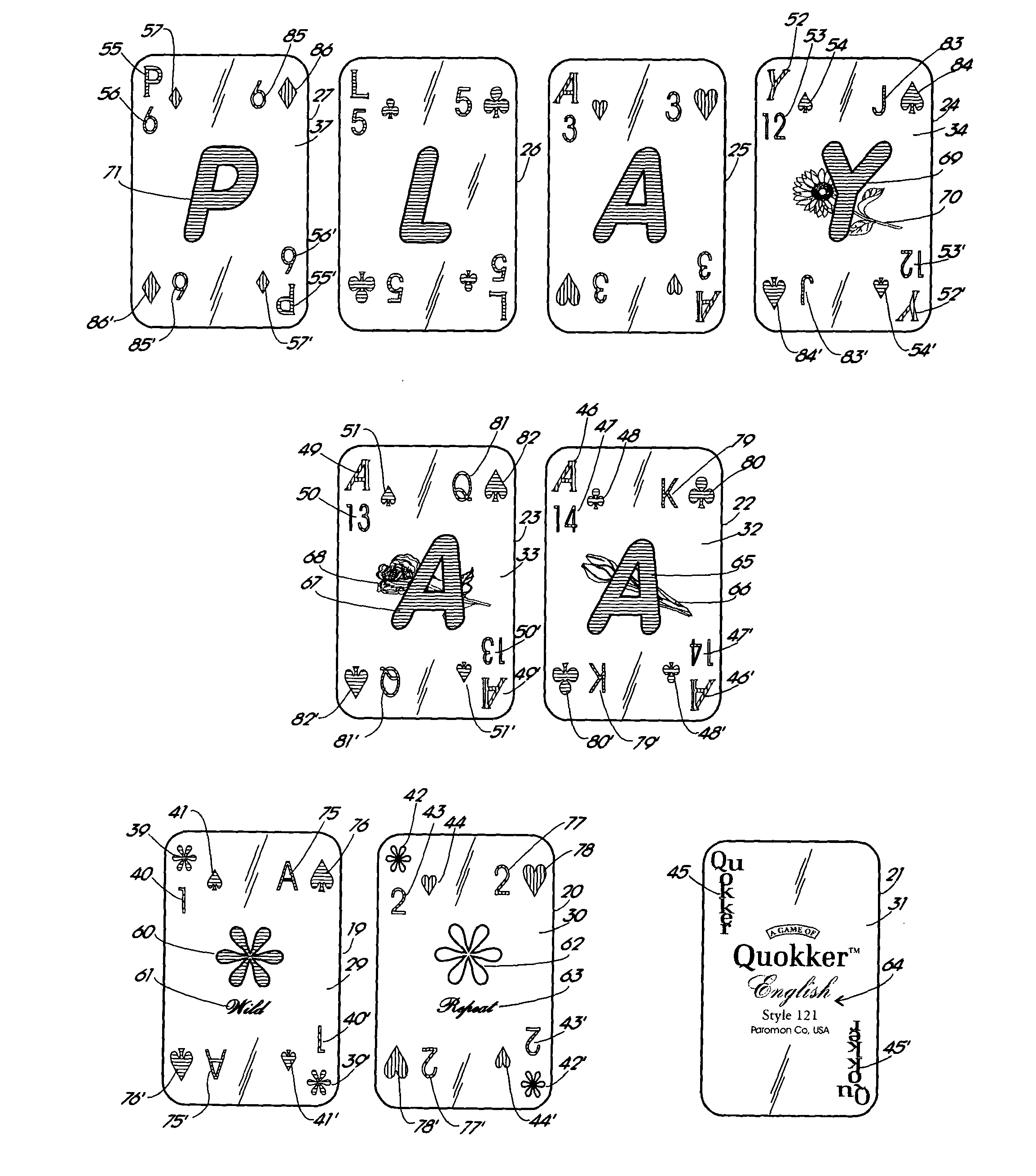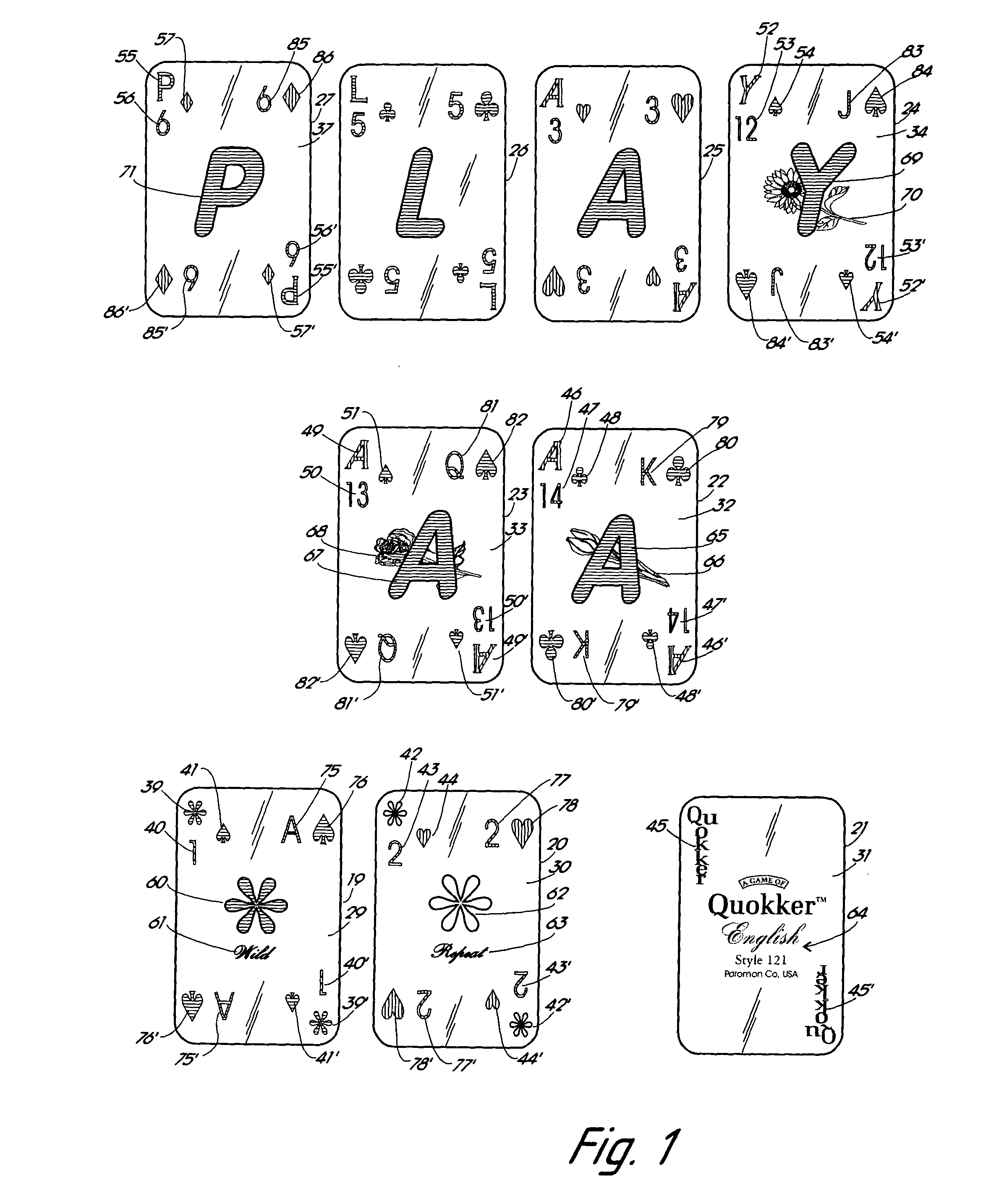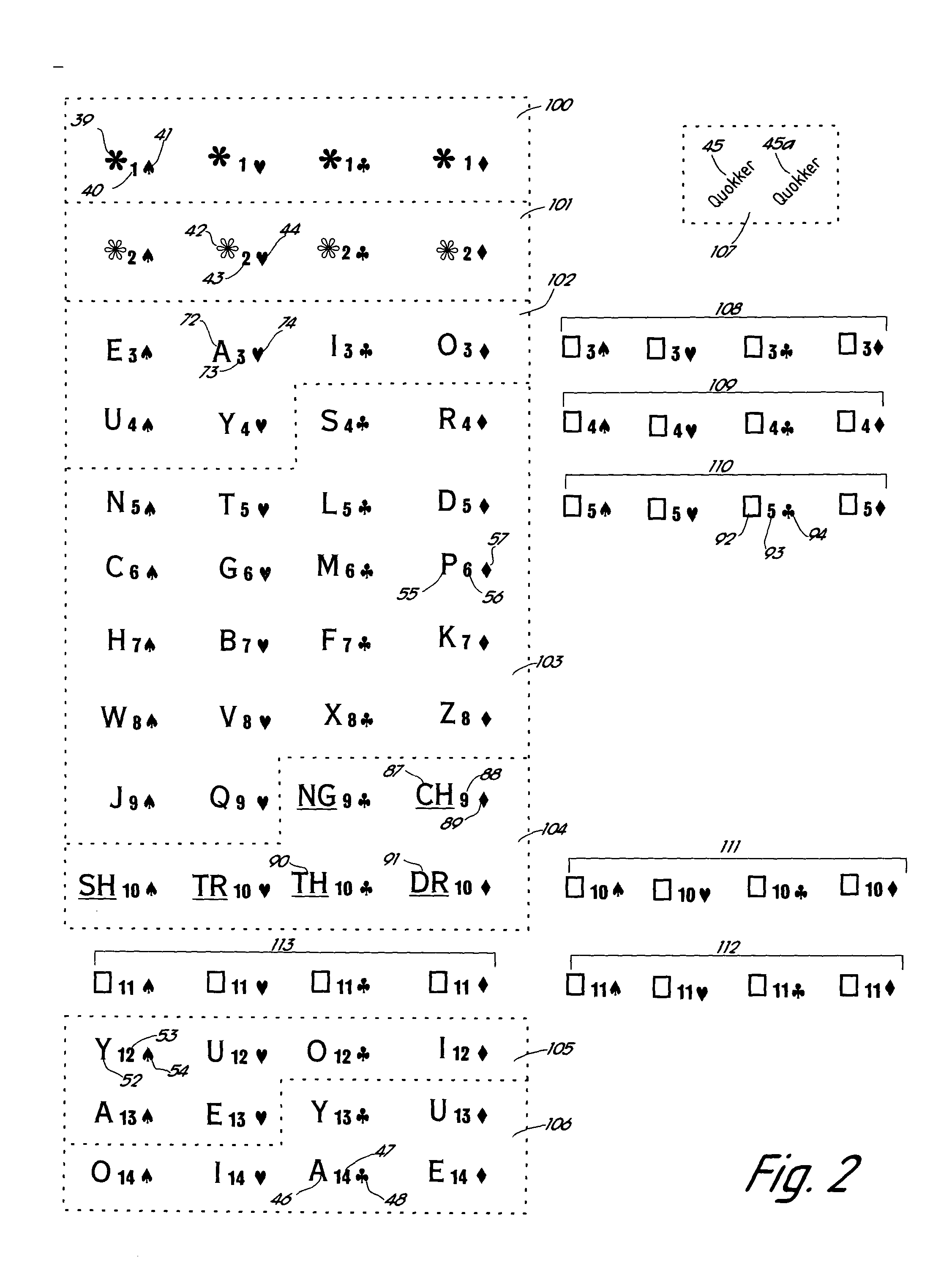Limitations and disadvantages of alphabet game equipment of the prior art include one or more of the following: disadvantageous alphabet letter distribution, disadvantageous numerical indicia design or lack of numerical indicia necessary for certain games, an excessively large number of alphabet playing pieces, and limited playability in general, as further cited below.
Alphabet game equipment having irregular alphabet letter distributions suffers a common
disadvantage of being difficult to familiarize with, difficult to memorize, and difficult for playing piece tracking during the playing of a game.
An irregular alphabet letter distribution renders a set of alphabet playing pieces difficult or impossible to use in the playing of games that require classification or grouping of playing pieces other than grouping by formation of words.
Alphabet game equipment of the prior art suffers from disadvantageous numerical indicia designs or lack of numerical indicia.
Some of the latest prior art patents consider the presence of numerical indicia on the alphabet playing pieces a
disadvantage (see, e.g., the Wall ice May 22, 2001 patent).
Disadvantages associated with irregular numerical point value indicia designs of the alphabet game equipment of the prior art include: (a.) being difficult to familiarize and to memorize (b.) being difficult or impossible to use as melding indicia, i.e., indicia based on which a meld may be formed or playing pieces may be classified or grouped, for the purpose of playing an interesting game, (c.) being inconvenient or impossible to use for certain advanced ways of numerical point value indicia based
score calculation or
ranking, and (d.) being less adapted to or impossible for the playing of numerical ga
Such equipment fail to provide the advantages and utilities of numerical point value indicia, or the advantages and utilities that a set of game equipment having numerical point value indicia may provide, such as the allowing of numerical games and numerical point value based
score calculations and
ranking.
The attempts were not successful because they aimed at improving the game equipment of the prior art on some aspects while failing to maintain the advantages on other aspects, in many cases introducing significant disadvantages of their own.
While these prior art disclosures introduced alphabet game equipment having regular alphabet letter distributions easier to familiarize with and track during the playing of a game, a significant
disadvantage is also introduced, namely, that, in construction of words from the alphabet playing pieces, often some letters that are more frequently used in the words of the alphabetic language, or occur repeated multiple times in a word, have an insufficient number of playing pieces while for less frequently used alphabet letters there are often excessive numbers of redundant playing pieces in the set of the game equipment.
The number of alphabet playing pieces in alphabet game equipment of the prior art in most instances is excessively large, typically one hundred or more.
The large number of playing pieces adds to the burden of playing piece tracking in the playing of a game.
On the other hand, alphabet game equipment of the prior art that has less alphabet playing pieces, such as the commercial ROYALTY™ game equipment, and the game equipment of the Wallice patent (May 22, 2001), the Hagedorn patent (Jun. 30, 1998), and the Manchester patent (Jun. 17, 1997), and other game equipment having fifty or so playing pieces or playing faces, suffers from the disadvantage of having an insufficient number of replicate alphabet playing pieces for the playing of certain games involving construction of words requiring a greater number of replicate alphabet letters.
The prior art has not offered a comprehensive array of games remotely comparable to the vast number of games possible with the traditional
deck of playing cards.
Heretofore, no trick-taking types of games of sufficient success have been developed for playing with alphabet and words of an alphabetic language using alphabet playing cards or playing pieces.
Although attempts have been made to include alphabet characters on the playing faces of the traditional
deck of playing cards (e.g., U.S. Pat. No. 1,012,574 Adams Dec. 26, 1911), for the purpose of extending the range of games playable with the traditional
deck of playing cards to include alphabet and word games, heretofore such attempts have largely failed to attain the desired objects and failed to reach any stage of substantial commercial success.
Another limitation of the traditional deck of playing cards is its history of association with gambling and casino games disliked by many who are interested in the cards only for recreational or educational purposes.
A further limitation of the traditional deck of playing cards is its specialized face design that is less understandable or appealing to children and that is less adapted to the playing of educational games or games having an educational theme.
The home game version of the TV Wheel of Fortune™ game fails to inherit the significant advantages of the elaborate TV game show, while retaining much of the complications of the TV game show settings, which is a significant disadvantage for a home game.
 Login to View More
Login to View More  Login to View More
Login to View More 


